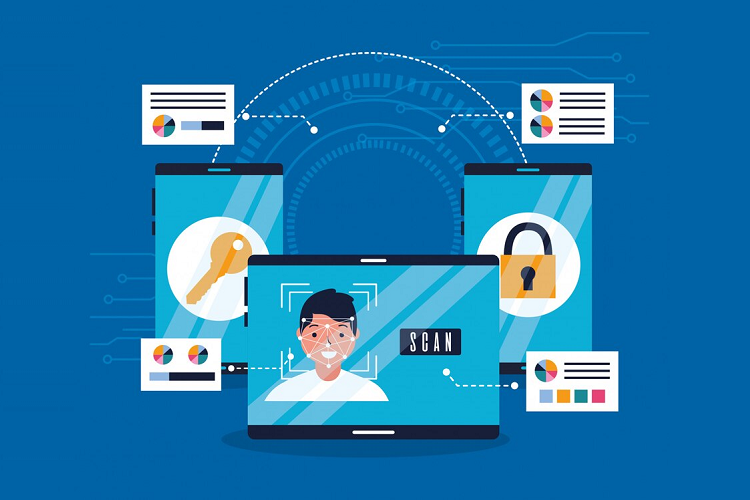Before discussing the differences between robotics vs machine learning vs artificial intelligence, Let’s understand the definitions and their functions.
Consider the following operations and applications on your phone: Uber, Google Maps, music recommendations, and voice searches. These are artificial intelligence examples. We are going to look at robotics and AI, as well as how AI can be utilized in machine learning. Let’s begin.
What is Robotics?
Robotics is the interaction of science, engineering, and technology that deals with the production of robots. A robot is defined as a machine that can be programmed to carry out autonomous or semi-autonomous functions. Robots can be used to assemble cars in factories, for example. Three main characteristics constitute robotics:
- They are mechanically constructed to interact with the environment for which they have been made. For example, the Mars rover has wheels individually motorized with titanium tubing, giving it the ability to firmly grip the rough terrain.
- Robots are powered by electricity or a battery to keep them running.
- They are programmed machines with an ability to know when to perform a given task.
There are various types of robots, and they include:
- Pre-Programmed Robots – These are programmed in controlled environments to do simple tasks, for example, a mechanical arm used in an assembly line.
- Humanoids – Perhaps, you’ve seen robots in movies and your favorite TV shows? They fall into the humanoid robot category. Humanoids are made to look like and mimic human actions, and they present a different field of artificial intelligence.
- Autonomous Robots – These operate independently without the need for human supervision. Here, you can refer to the Roomba cleaner, which works through sensors.
- Teleoperated Robots – They are remotely controlled and mostly utilized in military operations or bad weather conditions. Telerobots can also be used to fix leaks in underwater pipes. Drones for detecting landmines fall under this category as well.
- Augmented Robots – These enhance human abilities, and some can replace lost body functions such as prosthetic arms and legs.
What is Machine Learning?
Machine learning is said to be a subset of artificial intelligence, which gives systems the ability to learn automatically while improving from their experiences without being reprogrammed. The goal behind machine learning is to create algorithms from the data and give predictions. For a machine to learn, you require a database, features, and dataset. Let’s take a look at these three components briefly.
- Datasets – These refer to a special collection of samples that can include images, texts, numbers, or other forms. It generally takes time to collect this info.
- Features – They are the key to the solution of a given task and shows the machine where to focus on.
- Algorithm – If possible, the same task can be solved using different algorithms. However, various algorithms are combined for better performance.
What is Artificial Intelligence?
Artificial intelligence definition entails the study of ways to build intelligent programs as well as machines with the ability to solve problems creatively. It seeks to encroach on functions that have been considered to be human prerogative by modeling how the human brain works. But imitating the human brain is a bit more complicated.
You may have heard someone talk about narrow/weak AI, general/strong AI, or superintelligence. If you have not, don’t worry. The above are the three main branches of AI. Let’s explore their definitions and implications.
- Narrow or Weak AI: Narrow AI is defined as a field of artificial intelligence that allows high functioning systems to replicate or exceed human intelligence for a specific purpose. This type of AI cannot pass for a human outside its given scope as it’s goal-oriented to that particular task. Examples of narrow AI include self-driving cars, spam filters, or Facebook newsfeed. Facial recognition software, speech recognition technology, and voice assistants are also forms of narrow AI.
- Strong AI: This is also referred to as artificial general intelligence or AGI. It encompasses the idea of a machine possessing general intelligence and the ability to mimic human intellect and behavior. In addition, it can learn and use the acquired knowledge to solve problems. AGI can act in a way that cannot be distinguished from humans.
According to artificial intelligence news, scientists are nowhere near achieving this form of creation. For such developments to be made, innovation on making conscious machines with a full set of cognitive abilities will need to happen. Here, the theory of mind AI is used to help robots discern the needs, beliefs, emotions, and thought processes of human beings.
Artificial Super Intelligence (ASI)
With strong AI, machines gain consciousness and can understand people. However, with ASI, they not only imitate human intelligence and understand behavior but also gain self-awareness and exceed human intellect and ability. This is still nowhere near invention.
Robotics vs. Machine Learning vs. Artificial Intelligence
Now that we have looked at robotics and levels of AI, it’s time to understand these fields and functions in terms of artificial intelligence. AI in robotics entails using some sort of machine learning where an algorithm is being trained to produce a given output. But AI is distinguished from normal programming by the word “intelligence.” A non-AI program will just carry our defined instructions sequentially.
As we mentioned earlier, humanoid types of robots fall in the AI category. The most notable example, in this case, is Sophia, who is controlled by AI programs. However, most industrial robots are not AI in nature and have been programmed to perform repetitive tasks. They are limited in their capacity and output in comparison with AI robots.
Since there can be similarities when it comes to robotics and AI, these two are clearly different in application and shared aspects. But artificial intelligence and machine learning are related as machine learning is also a method of creating AI.
Conclusion
By now, you have understood what artificial intelligence is. We have also talked about robotics in detail by including various types: autonomous, humanoid, pre-programmed, and augmented robots.
Machine learning in artificial intelligence science involves giving the systems the ability to learn automatically as they continue to improve their experience without being programmed. This relies on the use of intelligence to achieve these milestones.
AI has the potential of continuing to make life easier. As applications for narrow AI increase, we will see more significant strides in technology. If you’re hoping for a future where you can integrate your consciousness into a machine, scientists are still years away from such a breakthrough. Besides, AGI application is still thought to be science fiction. However, with advancements in machine learning and artificial intelligence, we’re hopeful of a future that sees machines and humans work together. Maybe even eradicate diseases and poverty? Wouldn’t that be amazing? Please let us know what you think about it in the comments.
Thomas Glare is a technology writer with years of experience in software development. He has a deep understanding of software applications in solving everyday problems. When he is not spending time on free pokies, he researches solutions to the problem that plague human beings daily.




